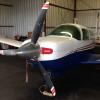Jack it up
-
Members Online
- Marc_B
- Igor_U
- Deb
- redbaron1982
- MaxwellSmart86
- MoonFlyer68
- Lincoln
- Rmfriday
- Kelingreen
- Jerry Brown
- Tmack201
- Marc B
- 802flyer
- joepilotmooney
- NickG
- catchman86
- Medflyer
- aaron.a.reynolds
- M20F
- brandonking2923
- bbingaman
- BobbyH
- Flyler
- tankles
- Paul Thomas
- MDMooney
- hammdo
- Florian Guthardt
- AH-1 Cobra Pilot
- N204TA
- TCC
- Vance Harral
- ArtVandelay
- JimK
- CAV Ice
- Justin Schmidt
- MikeOH
- Dsanford12
- eman1200
- EricJ
- Aaviationist
- Ron McBride
- Yooper Rocketman
- DrumGuruEC
- Greg Ellis
- clh
- MatthiasArnold
- DC_Brasil
- M20S Driver
- BrentS
- midlifeflyer
- Mooney in Oz
- richardbrochu27
- AndreiC
- ProtoFly
- divedoctor1


Recommended Posts
Join the conversation
You can post now and register later. If you have an account, sign in now to post with your account.